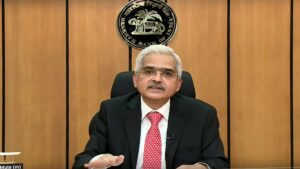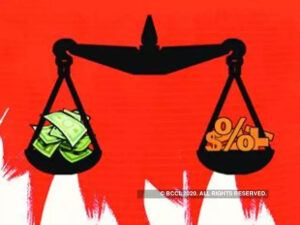The RBI Central Board approved the transfer of ₹57,128 crores as surplus to the Central Govt for the accounting year 2019-20 while deciding to maintain the Contingency Risk Buffer at 5.5%
The decision was taken when the Central Board of the RBI met on Friday under the chairmanship of Governor Shaktikanta Das through video conference. The central board reviewed the current economic situation, continued global and domestic challenges, and the monetary, regulatory and other measures taken by RBI to mitigate the economic impact of the Covid-19 pandemic.
The board also discussed the proposal of setting up an Innovation Hub. It also discussed various areas of operations of the central bank during the last year and approved the annual report and accounts for the year 2019-20. The Board also approved the transfer of ₹57,128 crores as surplus to the Central Government for the accounting year 2019-20, while deciding to maintain the Contingency Risk Buffer at 5.5%
Deputy GovernorsMichael DebabrataPatra, B.P. Kanungo and Mahesh Kumar other directors of the central board – N. Chandrasekaran, Ashok Gulati, Manish Sabharwal, Dilip S. Shanghvi, Prasanna Kumar Mohanty, Satish K. Marathe, S Gurumurthy, RevathyIyer and Sachin Chaturvedi, along with Tarun Bajaj, Secretary, Department of Economic Affairs and Debasish Panda, Secretary, Department of Financial Services attended the meeting.
How does the RBI earn money?
The RBI generates revenue in a number of ways. Open market operations, where a central bank regulates money supply in the economy, by buying and selling bonds in the open market,is a major source of income for the RBI. Apart from the interest received from these bonds, the RBI may also profit from favorable changes in bond prices. RBI’s engagement in dealings in the foreign exchange market may also contribute to the bank’s profits. The RBI, for instance, may pocket profits by buying dollars cheaply and sell them dearly in the future. It should be noted, however, that the primary mandate of the RBI is not to earn profits like commercial banks but to preserve the value of the rupee. Profit and loss are thus merely a side effect of its regular operations to shape monetary policy.
Last year the RBI’s board approved a record payment of ₹1.76 trillion to the government, which included ₹1.23 trillion as dividend and ₹52,640 crores from its surplus capital.
Why is the RBI payout different this year?
Each year, the RBI transfers to the government the money that it deems to be beyond its operational and contingency needs in its balance sheet. The RBI’s transfer of funds to the government per se is nothing new. But what has raised eyebrows this time is that the amount of funds being transferred by the central bank to the government this year is much lower than earlier — contracted by115% from last year, when it transferred ₹1.23 trillion crores as a dividend. The net surplus figures are: ₹52,683 (2013-14); ₹65,896 (2014-15); ₹65,880 (2015-16); ₹30,659 (2016-17), ₹50,000 (2017-18) and ₹1,23,00 (2018-19).
Revenue is falling well short of projections as India’s economy heads for its first full-year contraction in more than four decades. At the same time, the government is being forced to spend more to cushion the blow from the pandemic, straining the budget deficit. The government can help bridge the funding gap by drawing more cash out of the central bank, sell state assets and push up borrowing, which is already at a record high.
The dividend from the central bank will come at a time when the central government’s finances are under severe strain. The government’s fiscal deficit as on June 30 touched 83.2% of the full-year Budget target of ₹7.96 trillion rupees, primarily on account of a sharp fall in revenues due to the nationwide lockdown, imposed to curb the spread of Covid-19.
What is the controversy about the transfer?
The massive payout raises concerns that the government to meet its urgent spending needs may be confiscating money from the RBI, hence effectively turning the central bank into a government’s bank. Central banks such as the RBI, are supposed to be independent of all forms of government influence. In fact, governments around the world try to influence decision-making by their respective central banks in a number of ways. governments tend to pick bureaucrats who have been loyal to them over time, while appointing members to the central bank, such as to the post of Governor for instance. Some also view the action to get the RBI to let go of a fraction of its accumulated reserve as part of a wider campaign by the government to strip the powers of various independent regulatory bodies. In July, the government amended the Finance Bill to ensure that the Securities and Exchange Board of India (SEBI) transferred surplus funds in its custody over to the government. Some economists argue that the government has the right to make use of funds in the custody of public institutions such as the RBI to meet its fiscal needs. Critics, however, argue that stripping the financial assets of the RBI and SEBI can risk their independence.



